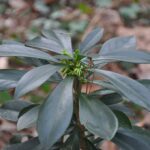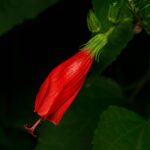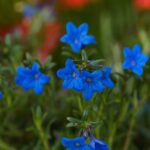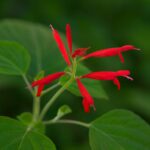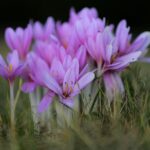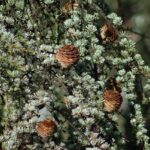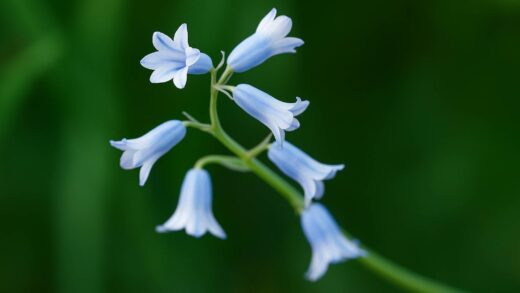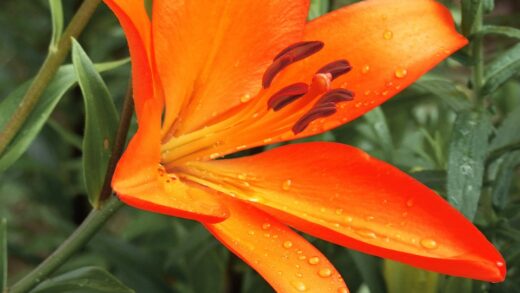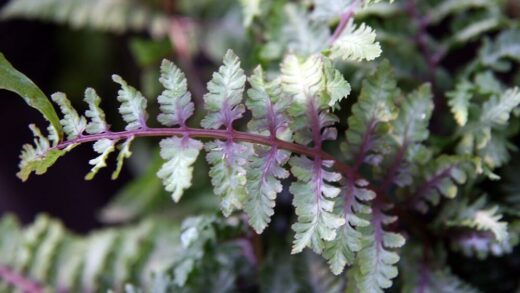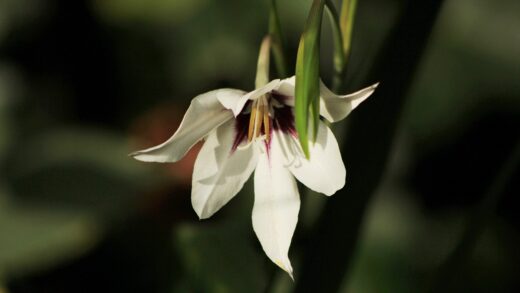Providing the appropriate nutrition is a cornerstone of cultivating a truly magnificent Geum coccineum, as proper feeding directly influences the plant’s vigour, the vibrancy of its flowers, and its overall resilience to pests and diseases. While scarlet avens is not considered an excessively heavy feeder, it thrives in a soil environment that is rich in organic matter and contains a balanced supply of essential nutrients. A well-thought-out fertilization strategy focuses on building healthy soil and supplementing as needed, rather than relying on frequent applications of strong chemical feeds, which can be detrimental in the long run. This holistic approach ensures the plant has access to the nutrients it requires throughout the growing season for sustained, healthy development.
The nutritional needs of scarlet avens are best met by a soil that is fertile and high in humus. The most effective way to create this ideal growing medium is through the consistent incorporation of organic matter. Materials such as garden compost, well-rotted manure, and leaf mould provide a wide spectrum of essential macro and micronutrients in a slow-release form that is readily available to the plant. These organic amendments also vastly improve soil structure, which in turn enhances the plant’s ability to absorb those nutrients and water, creating a synergistic effect that promotes robust health.
When considering supplemental fertilizers, a balanced approach is key. A granular, slow-release fertilizer with a balanced NPK (Nitrogen-Phosphorus-Potassium) ratio, such as 10-10-10 or 5-10-5, is an excellent choice for a general-purpose feed in the spring. Nitrogen supports lush foliage growth, phosphorus is crucial for strong root development and flower production, and potassium contributes to overall plant vigour and disease resistance. Applying this type of fertilizer just as new growth emerges gives the plant a strong start to the season.
It is crucial to avoid the temptation to over-fertilize, as this can cause more harm than good. An excess of nitrogen, in particular, can stimulate rapid, soft, leafy growth at the expense of flowers. This weak, sappy foliage is also much more attractive to pests like aphids and more susceptible to fungal diseases. Always follow the application rates recommended on the fertilizer packaging and remember that in the case of feeding plants, less is often more, especially when you have already invested in building rich, organic soil.
The importance of organic matter
Organic matter is the single most important ingredient for creating a fertile and healthy soil environment for your scarlet avens. It serves multiple critical functions that synthetic fertilizers alone cannot replicate. Firstly, as organic materials like compost and manure decompose, they release a complex array of nutrients slowly and steadily over time. This mimics the natural nutrient cycling processes found in nature and provides a consistent food source for the plant, preventing the boom-and-bust cycle associated with some liquid feeds.
More articles on this topic
Beyond providing nutrients, organic matter fundamentally transforms the physical structure of the soil. In heavy clay soils, organic particles wedge themselves between the fine clay particles, creating larger aggregates. This process, known as flocculation, improves drainage and aeration, preventing the soil from becoming compacted and waterlogged, which is a primary threat to the health of Geum roots. The improved aeration ensures that the roots have access to the oxygen they need to function correctly.
In contrast, when added to sandy soils, organic matter acts like a sponge, filling the large gaps between sand particles. This dramatically increases the soil’s water-holding capacity, reducing the frequency with which you need to water and ensuring that moisture is available to the plant for longer periods. It also improves the soil’s cation exchange capacity, which is its ability to hold onto and supply essential nutrients, preventing them from being leached away by rainfall or irrigation.
A soil rich in organic matter also fosters a vibrant and diverse soil food web. This ecosystem of bacteria, fungi, earthworms, and other organisms is essential for plant health. These organisms break down organic materials into forms that plants can absorb, they help to suppress soil-borne diseases, and their movements through the soil create channels that improve its structure. By regularly amending your soil with compost, you are not just feeding your scarlet avens; you are nurturing a living ecosystem that will support it.
Choosing the right fertilizer
When supplemental feeding is necessary, selecting the appropriate type of fertilizer is an important decision. Fertilizers can be broadly categorized as either organic or synthetic. Organic fertilizers, such as bone meal, blood meal, and fish emulsion, are derived from natural sources and release their nutrients slowly as they are broken down by soil microorganisms. This slow-release action provides a gentle, sustained feeding and reduces the risk of burning the plant’s roots. They also contribute to improving the overall health of the soil.
More articles on this topic
Synthetic, or inorganic, fertilizers are manufactured chemical compounds that typically provide nutrients in a form that is immediately available to the plant. This can be useful for providing a quick boost to a plant that is showing signs of a specific nutrient deficiency. They are often available as water-soluble powders or liquids for a fast-acting feed, or as coated granules for a more controlled, time-released application. While effective, they do not contribute to the long-term health and structure of the soil in the way that organic matter does.
For the general feeding of scarlet avens, a balanced, granular, slow-release fertilizer is often the most practical and effective choice. The term “balanced” refers to the NPK ratio, meaning it contains roughly equal proportions of nitrogen, phosphorus, and potassium. A slow-release formulation means the granules are coated with a substance that breaks down over time, releasing nutrients gradually over a period of several weeks or months. This provides the steady supply of nutrition that perennials appreciate and minimizes the risk of over-fertilization.
For a more targeted approach, you can tailor your fertilizer choice to the plant’s needs at different stages. In early spring, a balanced fertilizer is ideal for overall growth. If flowering is weak despite healthy foliage, a fertilizer with a higher phosphorus content (the middle number in the NPK ratio) can be applied just before the blooming period to specifically encourage flower bud development. This is often referred to as a “bloom booster” formula and can be applied as a liquid feed for faster absorption.
Application timing and techniques
The timing of fertilizer application is just as important as the choice of fertilizer itself. The most crucial feeding for Geum coccineum is in the early spring, just as the new leaves are beginning to emerge from the crown. Applying a granular, slow-release fertilizer at this time provides the plant with the essential nutrients it needs to fuel its initial flush of vigorous growth and to develop a strong framework for the upcoming flowering season. This single spring application is often sufficient for the entire year, especially in soil that is already rich in organic matter.
When applying granular fertilizers, it is important to do so correctly to ensure they are effective and do not damage the plant. Sprinkle the measured amount of granules evenly on the soil surface around the base of the plant, extending out to the dripline (the edge of its foliage). Avoid getting the granules on the leaves or in the crown of the plant, as they can cause chemical burns. After application, gently scratch the fertilizer into the top few centimeters of soil with a hand cultivator and then water the area well. Watering helps to activate the fertilizer and move the nutrients down into the root zone.
If you choose to use a liquid fertilizer, such as a water-soluble feed or a natural product like compost tea or fish emulsion, these are typically applied more frequently but in a more dilute form. A liquid feed can be beneficial for providing a quick nutritional boost, for example, to encourage a second flush of blooms after deadheading. These are generally applied every 2-4 weeks during the active growing season. Always dilute the concentrate according to the manufacturer’s instructions, as a solution that is too strong can easily burn the plant’s roots. Apply the liquid feed to the soil around the plant, thoroughly soaking the root zone.
It is very important to cease all fertilization by late summer or early autumn. Applying fertilizer, especially those high in nitrogen, late in the season can encourage a flush of tender new growth. This new growth will not have sufficient time to harden off before the first frosts arrive and will be highly susceptible to winter damage. Allowing the plant to slow its growth naturally and prepare for dormancy is a key part of its annual cycle and is essential for its survival through the winter.
Identifying nutrient deficiencies
While a well-maintained soil will prevent most nutritional problems, it is still useful for a gardener to be able to recognize the visual signs of common nutrient deficiencies. A general lack of vigour, stunted growth, and pale or small leaves can be an overall indication that the plant is lacking sufficient nutrition. However, specific symptoms can often point to a particular missing nutrient, allowing for a more targeted remedy. This observational skill helps in fine-tuning your soil management and fertilization practices.
One of the most common signs of a nutrient deficiency is chlorosis, which is the yellowing of leaves. If the older, lower leaves are turning yellow while the new growth remains green, this often points to a deficiency in a mobile nutrient like nitrogen. Nitrogen is essential for chlorophyll production and leafy growth, and when it is scarce, the plant will move it from older tissues to support new growth. A balanced fertilizer or a nitrogen-rich organic amendment like blood meal can correct this issue.
If the yellowing occurs primarily in the new, younger leaves at the top of the plant, it may indicate a deficiency in an immobile nutrient like iron or manganese. These elements cannot be easily moved by the plant from older tissues to new ones. Iron chlorosis typically presents as yellow leaves with contrasting green veins. This type of deficiency is often not due to a lack of the nutrient in the soil, but rather a soil pH that is too high (alkaline), which makes the iron unavailable for the plant to absorb. Lowering the soil pH with amendments like sulfur or peat moss can help.
Poor flowering or a purplish tinge to the leaves can sometimes be an indicator of a phosphorus deficiency. Phosphorus is vital for energy transfer, root development, and flower and seed production. If your scarlet avens has lush, green foliage but produces very few flowers, a lack of phosphorus could be the cause. An application of bone meal or a fertilizer specifically formulated for blooming plants (with a high middle number) can help to remedy this situation and encourage a more prolific floral display.







